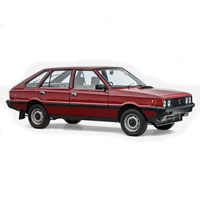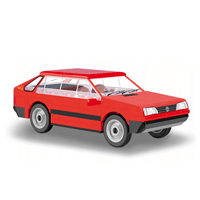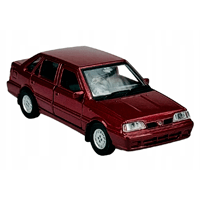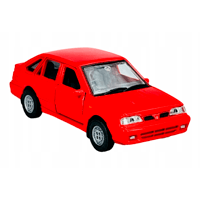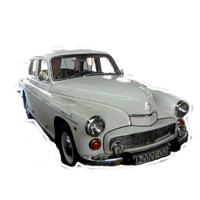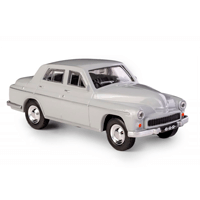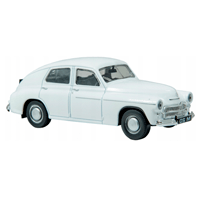
Catalog / FSO
FSO: Poland's Automotive Pride - From People's Cars to Collector's Items
FSO, or Fabryka Samochodów Osobowych (Passenger Automobile Factory), stands as a testament to Poland's rich automotive history. Founded in 1951 in Warsaw, FSO emerged from the ashes of World War II as part of Poland's efforts to motorize its population and boost its industrial capabilities.
The company's journey began with the production of the Soviet-designed Warszawa M20, a Polish version of the GAZ-M20 Pobeda. This marked the start of FSO's role in making automobiles accessible to the Polish people. In 1957, FSO achieved a significant milestone by introducing the Syrena, the first entirely Polish-designed car. The Syrena, with its distinctive two-stroke engine, became an icon of Polish motorization and remained in production until 1983.
One of the most interesting chapters in FSO's history began in 1965 when it started producing the Polski Fiat 125p under license from Fiat. This model, often simply called 'large Fiat' by Poles, became the backbone of Polish motoring for over a quarter-century. It was not only popular domestically but also became an important export product, reaching markets as far as the UK and Australia.
In 1978, FSO entered a new era with the introduction of the FSO Polonez. This hatchback, while based on Fiat mechanics, featured an original body designed by Giorgetto Giugiaro. The Polonez symbolized Poland's aspirations for modernity and remained in production, with various updates, until 2002.
The fall of communism in 1989 brought new challenges and opportunities for FSO. In 1995, the company entered into a joint venture with Daewoo, leading to the production of models like the Lanos and Matiz. However, Daewoo's global financial troubles in the early 2000s put FSO in a precarious position.
Despite attempts to revive production with models like the Chevrolet Aveo in the mid-2000s, FSO's journey as a major car manufacturer came to an end in 2011. Today, while no longer producing cars, FSO remains an important part of Polish industrial heritage. Many of its models, once common sights on Polish roads, have now become sought-after classics, cherished by enthusiasts and collectors alike.
The legacy of FSO extends beyond its cars. The company played a crucial role in Poland's industrialization, providing employment and contributing to the country's economic development. It also served as a symbol of national pride during challenging times, demonstrating Poland's ability to produce its own vehicles despite economic constraints.
Today, as classic car enthusiasts restore and celebrate FSO models, the brand continues to evoke nostalgia and admiration, reminding us of an important chapter in European automotive history.

